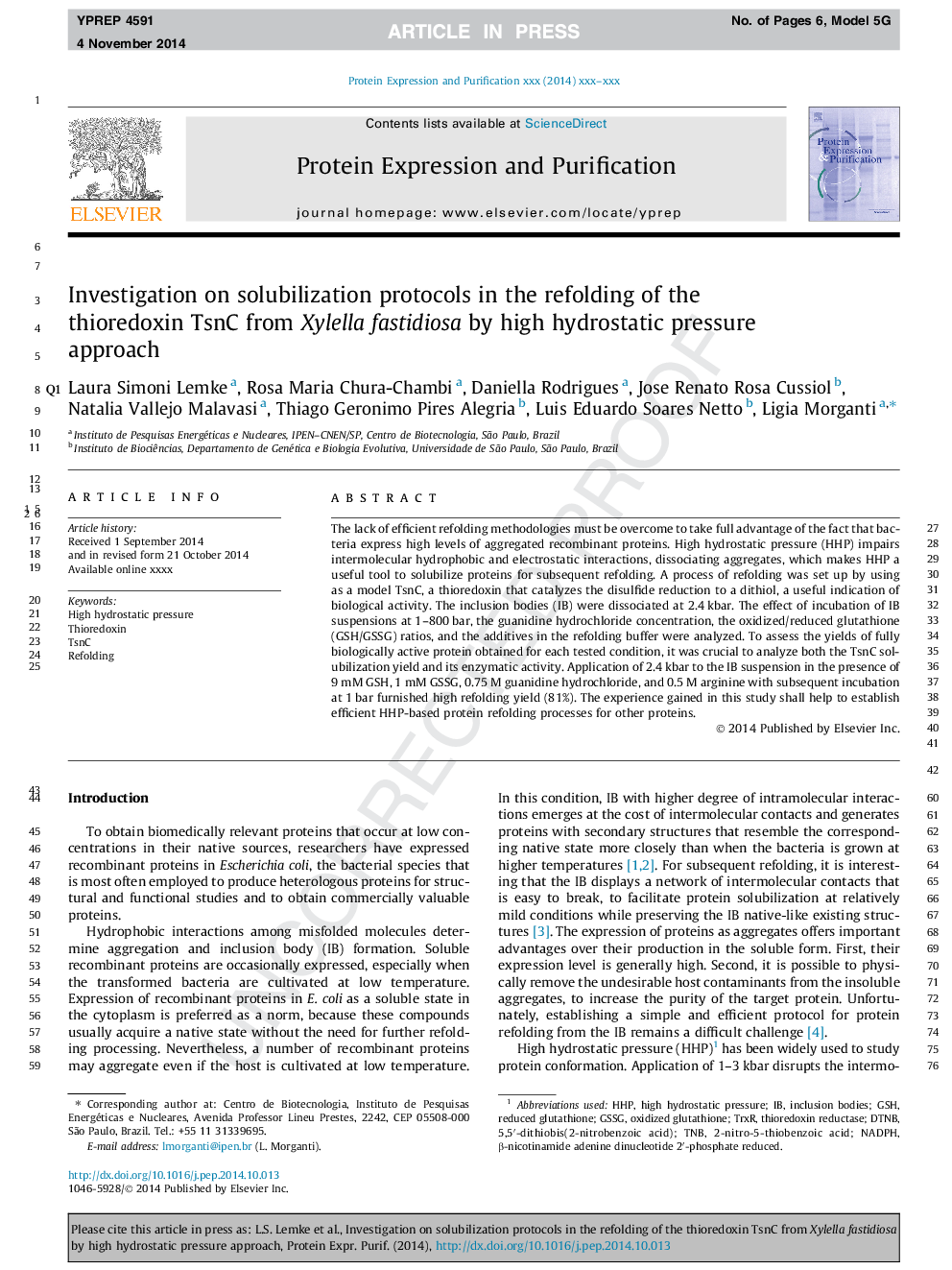| کد مقاله | کد نشریه | سال انتشار | مقاله انگلیسی | نسخه تمام متن |
|---|---|---|---|---|
| 8360412 | 1542335 | 2015 | 6 صفحه PDF | دانلود رایگان |
عنوان انگلیسی مقاله ISI
Investigation on solubilization protocols in the refolding of the thioredoxin TsnC from Xylella fastidiosa by high hydrostatic pressure approach
دانلود مقاله + سفارش ترجمه
دانلود مقاله ISI انگلیسی
رایگان برای ایرانیان
کلمات کلیدی
موضوعات مرتبط
علوم زیستی و بیوفناوری
بیوشیمی، ژنتیک و زیست شناسی مولکولی
زیست شیمی
پیش نمایش صفحه اول مقاله

چکیده انگلیسی
The lack of efficient refolding methodologies must be overcome to take full advantage of the fact that bacteria express high levels of aggregated recombinant proteins. High hydrostatic pressure (HHP) impairs intermolecular hydrophobic and electrostatic interactions, dissociating aggregates, which makes HHP a useful tool to solubilize proteins for subsequent refolding. A process of refolding was set up by using as a model TsnC, a thioredoxin that catalyzes the disulfide reduction to a dithiol, a useful indication of biological activity. The inclusion bodies (IB) were dissociated at 2.4Â kbar. The effect of incubation of IB suspensions at 1-800Â bar, the guanidine hydrochloride concentration, the oxidized/reduced glutathione (GSH/GSSG) ratios, and the additives in the refolding buffer were analyzed. To assess the yields of fully biologically active protein obtained for each tested condition, it was crucial to analyze both the TsnC solubilization yield and its enzymatic activity. Application of 2.4Â kbar to the IB suspension in the presence of 9Â mM GSH, 1Â mM GSSG, 0.75Â M guanidine hydrochloride, and 0.5Â M arginine with subsequent incubation at 1Â bar furnished high refolding yield (81%). The experience gained in this study shall help to establish efficient HHP-based protein refolding processes for other proteins.
ناشر
Database: Elsevier - ScienceDirect (ساینس دایرکت)
Journal: Protein Expression and Purification - Volume 106, February 2015, Pages 72-77
Journal: Protein Expression and Purification - Volume 106, February 2015, Pages 72-77
نویسندگان
Laura Simoni Lemke, Rosa Maria Chura-Chambi, Daniella Rodrigues, Jose Renato Rosa Cussiol, Natalia Vallejo Malavasi, Thiago Geronimo Pires Alegria, Luis Eduardo Soares Netto, Ligia Morganti,